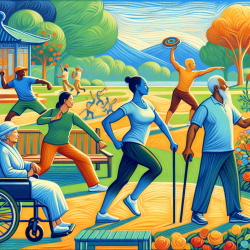Introduction
Physical activity (PA) is a cornerstone of healthy aging, promoting mobility, independence, and reducing health declines. Despite its importance, many older adults remain insufficiently active. A recent study titled "Physical activity from the perspective of older adults: a convergent mixed-method study" provides valuable insights into the factors influencing PA among older adults. This blog explores how practitioners can leverage these findings to enhance their interventions and encourage further research.
Understanding the COM-B Model
The study utilizes the COM-B model, which stands for Capability, Opportunity, and Motivation, as a framework to understand behavior change. Each component plays a crucial role in influencing PA levels:
- Capability: Physical and psychological capacity to engage in PA.
- Opportunity: External factors that make PA possible.
- Motivation: Mental processes that drive PA behavior.
Key Findings
The study's mixed-methods approach revealed several key factors influencing older adults' PA levels:
- Previous PA Engagement: A strong predictor of current PA levels, emphasizing the importance of lifelong activity.
- Current Motivation: Reflective and automatic motivation significantly impact PA engagement.
- Health Status and Age: Physical capability and health status are crucial for maintaining PA levels.
- Opportunities: Social and physical opportunities play a vital role, although they were not significant predictors in the quantitative analysis.
Implications for Practitioners
Practitioners can use these insights to design more effective interventions for older adults:
- Promote Lifelong Activity: Encourage early engagement in PA to foster lifelong habits.
- Address Motivation: Develop strategies that enhance both reflective and automatic motivation.
- Tailor Interventions: Consider individual health status and physical capabilities when designing PA programs.
- Enhance Opportunities: Ensure that PA facilities are accessible and that older adults have the knowledge to use them safely.
Encouraging Further Research
The study highlights the need for further research, particularly in understanding the role of opportunity and emotions in PA engagement. Researchers are encouraged to explore these areas using age-disaggregated data and mixed-methods approaches to gain deeper insights.
Conclusion
Understanding the factors influencing older adults' PA levels is crucial for promoting healthy aging. By leveraging the COM-B model and the study's findings, practitioners can design interventions that address the unique needs of older adults. To read the original research paper, please follow this Physical activity from the perspective of older adults: a convergent mixed-method study.










